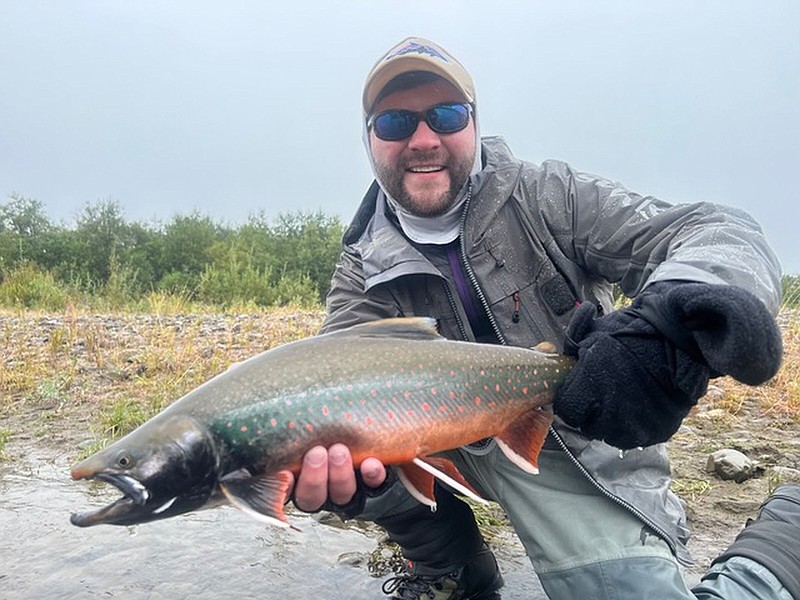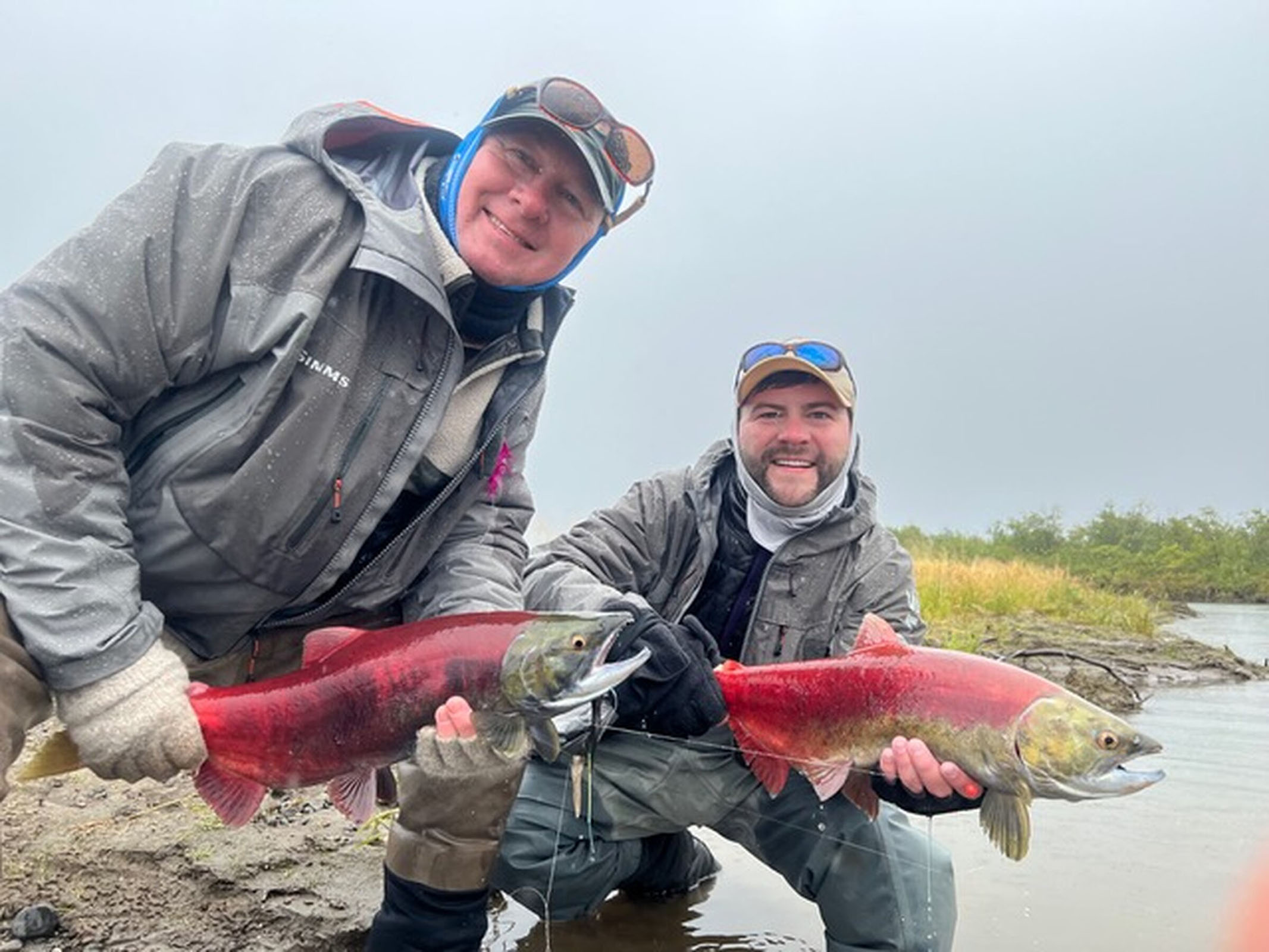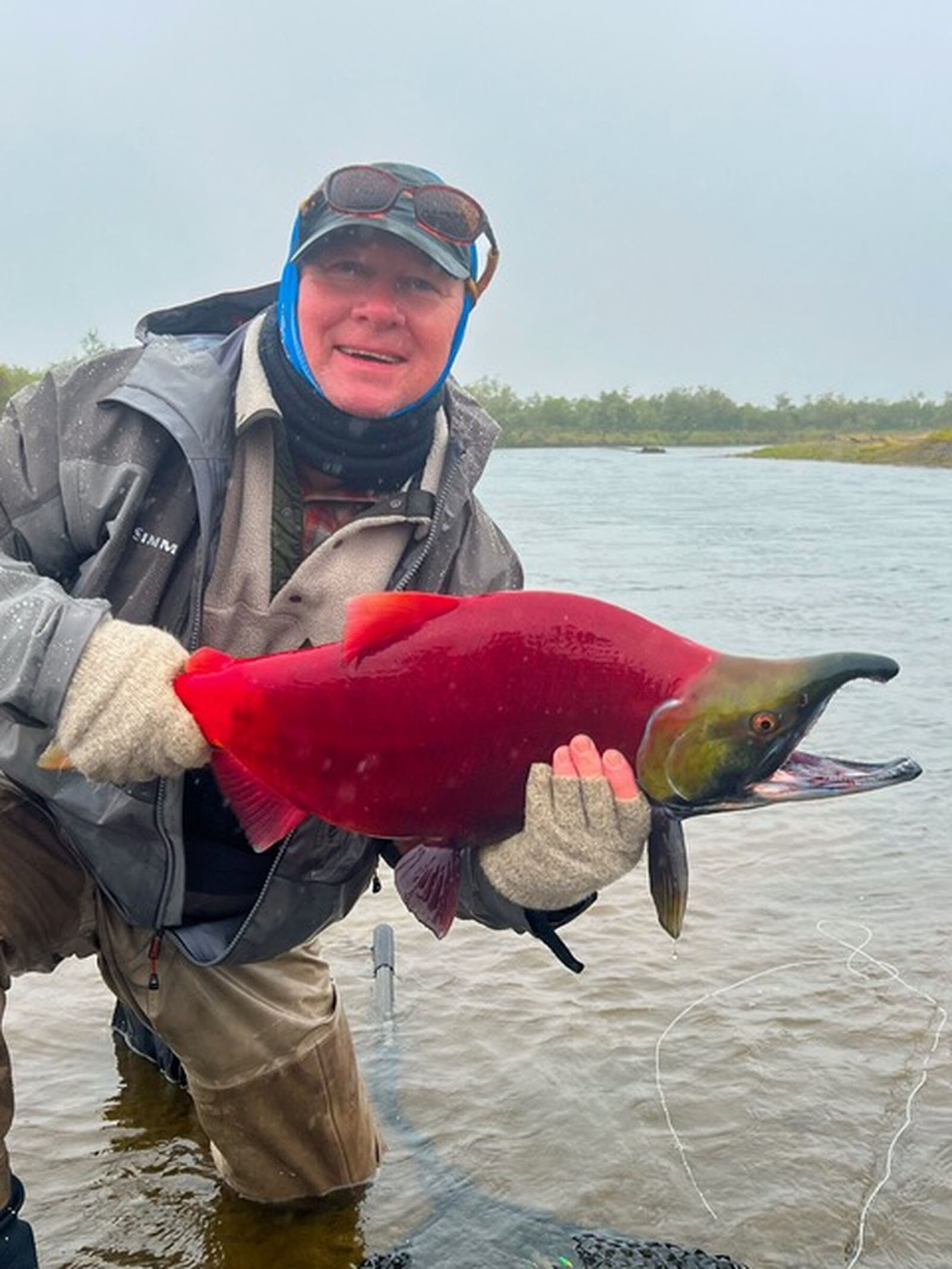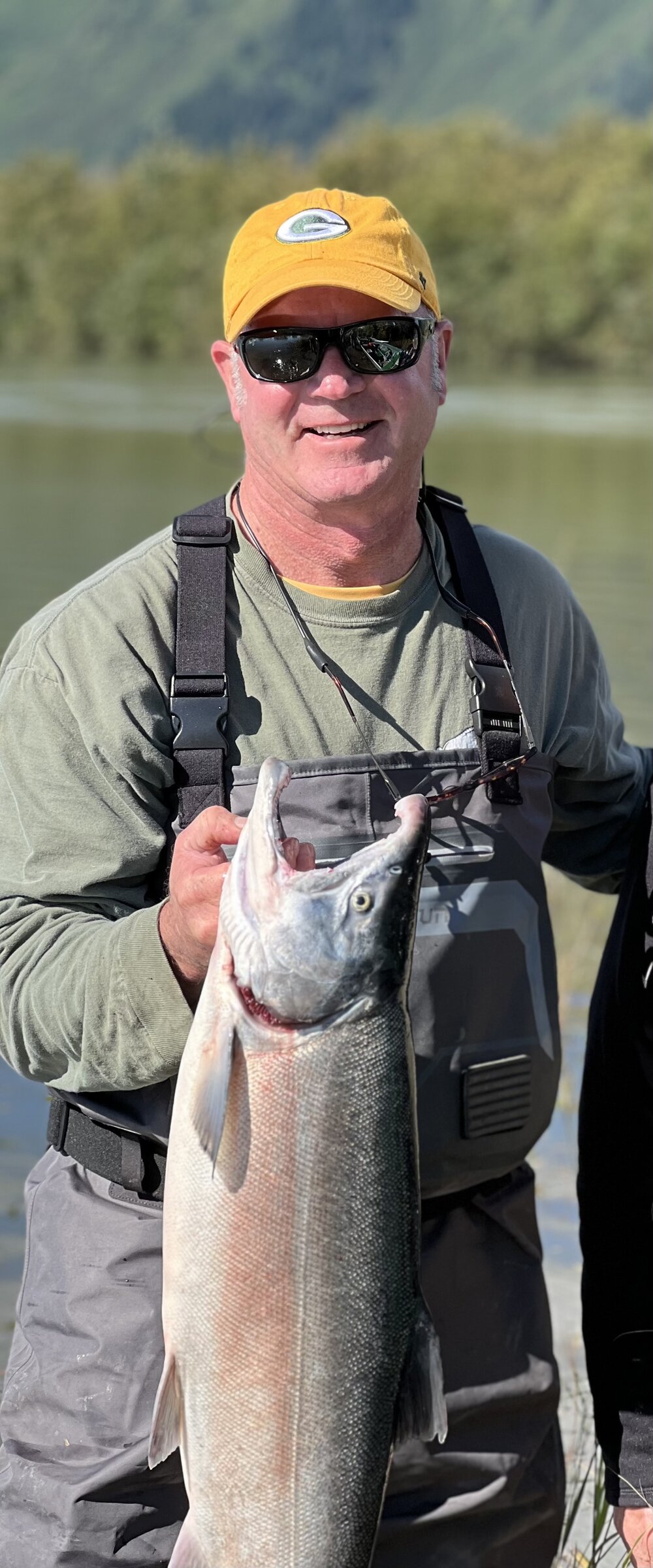Fishing in 100-degree temperatures and high humidity is not fun, so a number of Arkansans sought refuge this summer in Alaska.
In August, Anthony Michaels of Little Rock, owner of the Crosseyed Pig, made his annual fly fishing pilgrimage to the Land of the Midnight Sun, this time the Togiak River. Always in search of a challenge, Michaels used a 4-weight fly rod and 4-weight-forward line. We use that for trout and smallmouth bass in Arkansas. It has about half the backbone that conventional wisdom says you need for ocean run fish in peak physical condition.
"Everybody thought I was nuts for trying it," Michaels said in a text message. "It worked fine until the salmon got (mad) and ran. Then all you could do is hold on and hope he would stop before your line ran out. Sometimes he did. Sometimes he didn't."
Also in August, Mark Wingfield of Little Rock joined a group of Arkansas physicians for a bucket list trip on the Kanektok River. It was a graduation gift of sorts for Wingfield's son, Chase, who recently finished his medical residency at Overland Park Regional Medical Center in Overland Park, Kan.
"We've talked about doing it forever," Wingfield said. "It was a great gift for his accomplishment and good timing before him going into being a doctor full time."
Fishing in Alaska is not like fishing in Arkansas, where you drive on a paved highway to a developed fishing access like Rim Shoal on the White River or John F. Kennedy Park on the Little Red River. Getting anywhere in Alaska is a logistical challenge.
"You fly into Anchorage, take another flight to Bethel, and then get in a prop plane and fly into a village called Quinninock," Wingfield said. "From there, we took boats about an hour up the river to a place where our outfitter had quite an elaborate camp set up."
Duncan and Sons Outfitters lease their concession from the Inuit, who have commercial fishing rights to the waters. Recreational anglers keep only what they will eat that day and release everything else. They cannot keep extra fish to ship back home, Wingfield said.
"But man what a fishery!" Wingfield said. "My gosh, I've never seen such a variety of fish and size of fish. It was non-stop. I was there for six days. I was exhausted by the end of the fourth day, but I just kept going. It's a drug. You can't get enough!"
The group caught sockeye salmon and silver salmon, arctic grayling, char, rainbow trout and Dolly Varden. Wingfield said he hooked one king salmon but did not land it.
The rig Wingfield used depended on the quarry. For the Dolly Varden and rainbows, he pegged a string of colored beads on his tippet about six inches above a bare hook. The beads resemble salmon eggs. The trout hover around the salmon in back channels and eat their roe.
"The fish would grab the beads," Wingfield said. "When you feel one holding the beads, you set the hook. It typically was a lip set versus deep set like you get with Powerbait. The release was easy. A minute later, you'd have another fish. You couldn't leave your line in water. You'd take a breath with the line floating behind the boat or where you're wading. When you go to cast, you would already have a fish on."
For salmon, he stripped large streamers across current seams in fast water.
For Dolly Varden, char and rainbows, Wingfield said he used a 9-foot, 6-weight Orvis Helios rig with a fighting butt. For silvers and sockeyes he used an 8-weight Helios. He used 10-foot, 20-pound test leaders and a 15-foot, 10-pound test tippet.
The streamers had heavy tungsten heads. He said there is nothing graceful about fly fishing with such heavy gear, and that the guides call it "chunk and dunk." For such big fish, it's necessary. Wingfield said the group caught silver salmon up to 38 inches and other species up to 28-inches. One member of the group caught a 36-inch king salmon.
"I'm ruined now," Wingfield said. "In Arkansas, only once has a fish taken me into the backing. There, its constant. It's going to be hard heading up to the Little Red after this."
The price of an Alaska trip will probably make it a lot easier to go to the Little Red. Wingfield said it costs $5,800 per angler for the camp and guides, plus tips. Add airfare from Little Rock to Anchorage, plus an extra $650 for a round-trip flight to Bethel and $300 for round-trip airfare to the village. You also have to pay for motel lodging before getting to camp. Wingfield said he has never had occasion to tie Alaskan streamers, so he bought $700 worth of flies. The total cost, he said, was $12,000-$13,000.
Chris Larson of Maumelle didn't pay nearly that much for a do-it-yourself trip with his uncle, who has fished without guides near Cordoba, AK., for many years. Larson said the fishing was poor because of high, muddy water, but that it was still a trip of a lifetime.
Larson said he and his uncle wade fished the Alagnik River and Ibek Creek. Reaching these waters required a 1-hour flight from Anchorage.
"Even the commercial fishermen struggled with the silver (salmon) run," Larson said. "They got three days of rain before we arrived, and had we had three days of rain while we were there. Usually you have a limit in one to three hours. We struggled to get limits every day. I never did, but for the scenery and camaraderie, I didn't care."
Larson said he and his uncle used 5/16-ounce inline spinnerbaits on heavy spinning gear. His rod was an 8-foot Triumph Steelhead Series rod with green, 12-pound test Trilene.
"'A River Runs Through It,' we are not," Larson said, laughing. "We're the dirty worm fishermen that fly fishermen hate."
In high water, the usual fishing holes were either inaccessible or too treacherous to access.
"There's this strange mixture of white gravel sand," Larson said. "Every step you take, the current buries your foot. It's almost like duck hunting in gumbo. Trying to unplant my foot in heavy current and replant, I almost went over a couple times where I'd flop over on my face. I'm dealing with some back issues, so I just didn't do it. Some spots were inaccessible that you usually just walk right to."
A pleasant surprise, Larson said, was how helpful and hospitable local anglers were.
"If you just came off a plane and didn't know anything, the locals and other fishermen were very forward with advice," Larson said. "I found that unique. Other places, people are very protective."
Anthony Michaels has made the same observation many times.



